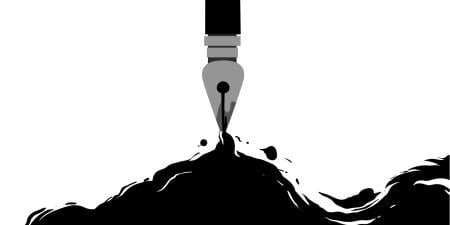Case
State University Medical School’s explicit, community-based mission is to educate primary care physicians for its home state, which comprises mainly small towns and rural areas.
As its fortieth anniversary approached, State U. Medical School administration reviewed alumni data and realized that the school had not come close to fulfilling its mission. The school required those who received financial aid to complete residency in a primary care specialty within the state. If they did so—and most did—their loans were forgiven. But the alumni data showed that, over the years, an average of 60 percent of residents had gone on to fellowships in subspecialties immediately after residency, and many of those had moved out of state to practice.
As a corrective to this “mission slippage,” a new policy for state-funded loans and privately funded scholarships was proposed such that students who declared their interest in practicing primary care in the state and received full tuition from state or private sources had to practice primary care in the state for 10 years after completion of their residencies to repay the cost of their medical education. There was a sliding repayment scale based on service increments of 1 year for those who practiced primary care in-state but did not fulfill their 10-year service agreement.
Several of the school’s private funders objected to the proposed policy; at least one was outraged.
“I’ve always supported our mission,” he said, “but this new policy is coercive. It’s social engineering, is what it is. Flies in the face of everything this country and this state stand for. When my grandfather came to this state in the early part of the last century, a man could make his living any way he wanted to, long as he didn’t break the law.”
“What’s worse,” the funder continued, “is that this policy hurts the middle- and low-income kids. The rich kids don’t need our support, so they can practice anything they want, anywhere they want.”
Commentary
The United States is currently facing a physician shortage of epic proportions. Estimates predict a 20 percent deficit in the workforce by 2025, with the majority of the deficit occurring in primary care [1]. The proportion of residents choosing to practice primary care has declined drastically from 54 percent in 1999 to 20 percent in 2008, suggesting that even the current projections may underestimate the extent of the crisis [2]. In light of the current data, it is laudable that State University Medical School is attempting to create incentives to recruit more medical students to primary care. However, despite its good intentions, in order to make a decision regarding whether the proposal should be implemented, one should first consider whether it is just.
John Rawls, one of America’s leading moral and political philosophers, believed that justice is the primary virtue of social institutions. Since a medical school is a social institution, created to address the health needs of the public, justice is a standard by which the State University Medical School’s policy should be judged. In A Theory of Justice, Rawls proposes guidelines for determining whether a social contract or agreement is founded upon the principles of justice. He defines the principles of justice as “principles that free and rational persons concerned to further their own interests would accept in an initial position of equality as defining the fundamental terms of their association” [3]. The initial position of equality is a hypothetical situation in which no one knows his class or socioeconomic status. Behind this “veil of ignorance,” as Rawls calls it, everyone is in a similar situation, and therefore no one can design the contract or agreement in his or her favor. Without knowing how the contract will affect them, individuals choose a policy that benefits the greater good, creating a fair social contract. Rawls goes on to argue that individuals behind this veil of ignorance would only choose inequalities of wealth and authority if they resulted in compensating benefits for everyone and, in particular, for the least advantaged members of society.
Using Rawls’s definition of the principles of justice to analyze whether the State University Medical School’s policy is just, it is first necessary to decide whether the individuals involved in this agreement are free. If an individual feels that he has no choice but to accept an agreement, then the agreement is unjust. In this specific situation, the concern brought up by one of the school’s funders is that economically disadvantaged students will feel coerced into choosing a primary care specialty in order to have their medical school loans forgiven. The assumption is that since these students cannot afford to pay for their medical school education, they have no choice but to practice primary care for 10 years, whereas rich medical students are free to choose any specialty.
The fallacy in this argument lies in the assumption that there are no other forms of financial aid being offered to these students. Besides the State University Medical School’s loan forgiveness offer, all medical students are eligible to apply for need-based grants and loans from the government. Medical school students submit a Free Application for Federal Student Aid, which is used to calculate the expected family contribution (EFC). Most medical schools cover the difference between the cost of education and the EFC with institutional grants, institutional loans, or federal loans [4]. Coercion implies a lack of choice, but there are other financial aid opportunities available to these students if they choose not to declare an interest in primary care.
If, despite these other financial aid opportunities, the cost of a medical school education were especially prohibitive to economically disadvantaged students, then it would be expected that these students would feel pressured to choose specialties with the highest salaries. However, studies have shown that, despite graduating with more loans, students from disadvantaged backgrounds are more likely to go into the lowest paying specialties—primary care fields. A meta-analysis of articles on choice of family medicine from 1993 to 2003 concluded that lower socioeconomic status is consistently associated with the choice of family medicine [5].
If those students chose primary care in the absence of financial incentives, then financial concerns do not appear to be the main deciding factor. They have either found other means of repaying their loans or are choosing a specialty regardless of their financial burden. Contrary to the funder’s argument, then, it appears that economically disadvantaged students stand to gain most from this policy because they will receive a free medical school education in return for practicing a specialty that they would have chosen regardless of the financial incentive.
It could be construed as unjust that the University’s policy binds these students to practice primary care for 10 years in the state. However, there is a legal precedent for assigning individuals to work in a certain area if they are receiving federal funding. The Emergency Health Personnel Act, signed into law in 1972, assigned civil servants to practice in underserved areas in return for loan forgiveness [6]. State Medical School has an explicit community-based mission to educate primary care physicians for its home state, and students accept the scholarships and loans knowing that their education is being funded in return for their practicing primary care in the state. It is therefore just to demand that the money be repaid if the students do not fulfill their part of the bargain. Should the doctors change their minds and decide to practice a different specialty or move to another state, the financial penalty imposed by the policy is not so great that it would prohibit them from doing so.
The financial penalty proposed by the university would occur after residency, when the individuals are earning their anticipated salaries. Repayment is on a sliding scale, giving the individuals sufficient time to repay their loans. The current maximum repayment term for Federal Stafford Loans is also 10 years. According to the AAMC’s Medloans calculator, it is completely feasible to pay off the average medical school loan on the average salary of a primary care physician [7]. The financial penalty of the university’s policy will not be any greater than the financial burden faced by all the other physicians paying off their medical school loans and therefore should not prevent anyone from choosing to pursue a different specialty or to practice in a different state.
Even if it is assumed that the university’s policy does place an unjust financial burden on the physician who chooses not to practice primary care or chooses to practice in a different state, according to the principles of justice established by John Rawls, inequalities can be just if they benefit the least advantaged members of society. This idea of just inequalities can be found in U. S. government policies; in the graduated tax rate, for example, federal and state income tax rates are higher at higher levels of income. This unequal distribution of tax rates is justified according to the principle that the extra money is used by the government to build and maintain social institutions that benefit all citizens, including those who are economically disadvantaged. Analogously, if the university’s policy is shown to benefit disadvantaged and underserved populations, the policy can be determined to be just despite its unequal burden on some physicians.
The benefit from the university’s policy comes from the fact that the state is comprised mainly of small towns and rural areas. The severe shortage of physicians in rural areas is an especially serious problem because, in general, those living in rural areas have greater medical need, are older, and have higher incidence of diabetes and cardiovascular disease than their nonrural counterparts [8]. Primary care physicians represent the largest source of rural health care, and their numbers are expected to decrease; fewer than 3 percent of medical students who graduated in 2009 planned to practice in rural areas or small towns [9].
If State University’s policy does place an unfair financial penalty on the physician who chooses to switch specialties, it is possible that more physicians will be dissuaded from leaving primary care, and the number of practicing primary care physicians in underserved urban areas will increase. Regardless of whether the physician sees the loan repayment penalty as a financial hindrance that limits his freedom to choose to practice in whatever specialty he desires, the university’s policy is still fair and just, based on the benefits that will be gained by the underserved communities.
The university’s policy meets the criteria for justice established by Rawls and should be implemented. Despite being just, however, it may not be the most efficient policy. It may not succeed in its mission of increasing the number of practicing primary physicians in its state. A study investigating the National Health Service Corps, a similar loan forgiveness program that requires that individuals practice primary care in rural areas for a certain period of time, found that less than 40 percent of the physicians continued to practice in the rural area after completing their service requirement [10]. Although these programs succeed in recruiting more physicians to primary care, they don’t necessarily increase retention. An alternative approach would be to create a special program within the medical school that is specifically designed to produce primary care physicians.
One of the theories about why medical students do not go into primary care holds that the unofficial culture of the school discourages that choice. Studies have shown that students who attend a school with a relatively low rate of graduates who enter primary care fields are significantly less likely to, themselves, choose primary care as a specialty. A medical school with an official mission and curriculum to support the choice of primary care may harbor unofficial negative attitudes toward the specialty. Two studies have looked at the existence and impact of negative attitudes expressed unofficially by faculty, residents, and students during the process of medical education. Both studies found that a majority of students reported hearing negative comments about primary care and that a certain percentage of them changed specialties because of this [11, 12]. Therefore, even if the university’s policy succeeds in recruiting more students interested in primary care to the school, they may not apply to primary care residencies when they graduate.
On the other hand, schools with a special pathway for primary care report higher proportions of graduates in primary care than in the conventional curriculum. Perhaps when students who are interested in primary care are separated from the rest of the medical school class and are taught by faculty who are especially passionate about the field, they are not exposed to an unofficial negative attitude and are not dissuaded from choosing primary care. In addition, students who participate in a special pathway have an opportunity to receive more exposure to, and to develop a deeper understanding of, the field.
Jefferson Medical College in Pennsylvania is a good example. Jefferson has a special primary care pathway (PSAP) in which students have family physician faculty advisors, take their required third-year family medicine clerkship in a rural location, and do their senior outpatient subinternship in family medicine. The program reports an 11-to-16-year retention rate of 79 percent for primary care physicians in rural areas [13]. Similarly, Mercer University School of Medicine in Georgia, founded with the explicit goal of graduating primary care physicians for rural areas, consistently reports that the proportion of its graduates in primary care is well above the national average [14].
Instead of altering its loan forgiveness program, State University Medical School should consider funneling its financial resources into creating a separate primary care program with a curriculum that focuses on educating students about health care in rural areas. Not only will these students benefit from the extra exposure to the unique clinical and resource challenges of primary care, they will also have the opportunity to meet inspiring mentors and fellow passionate students and to develop their own informed opinions of the specialty.
References
- Cooper RA. Weighing the evidence for expanding physician supply. Ann Intern Med.
- Garibaldi RA, Popkave C, Bylsma W. Career plans for trainees in internal medicine residency programs. Acad Med. 2005;80(5):507-512.
-
Rawls J. A Theory of Justice. 3rd ed. Cambridge, MA: Harvard University Press; 1999: 10.
-
US Department of Education Federal Student Aid. Student aid eligibility. http://studentaid.ed.gov/PORTALSWebApp/students/english/aideligibility.jsp?tab=funding. Accessed November 19, 2012.
- Senf JH, Campos-Outcalt D, Kutob R. Factors related to the choice of family medicine: a reassessment and literature review. J Am Board Fam Pract. 2003;16(6):502-512.
-
US Department of Health and Human Services National Health Service Corps. Mission and history. http://nhsc.hrsa.gov/corpsexperience/aboutus/missionhistory/index.html. Accessed November 19, 2012.
-
Association of American Medical Colleges. Financial aid fact sheets. https://www.aamc.org/services/first/first_factsheets183294/afford_med_school.html. Accessed November 19, 2012.
- Rosenblatt RA. A view from the periphery - health care in rural America. N Engl J Med. 2004;351(11):1049-1051.
-
Association of American Medical Colleges. Matriculation student questionnaire 2009: all schools summary report. https://www.aamc.org/download/64324/data/msq2009.pdf.pdf. Accessed October 15, 2010.
- Rosenblatt RA. Beyond retention: National Health Service Corps participation and subsequent practice locations of a cohort of rural family physicians. J Am Board Fam Pract. 1996;9(1):23-30.
- Hearst N, Shore WB, Hudes ES, French L. Family practice bashing as perceived by students at a university medical center. Fam Med. 1995;27(6):366-370.
- Hunt DD, Scott C, Zhong S, Goldstein E. Frequency and effect of negative comments (“bad-mouthing”) on medical students’ career choices. Acad Med. 1996;71(6):665-669.
- Rabinowitz HK, Diamond JJ, Markham FW, Santana AJ. Increasing the supply of rural family physicians: recent outcomes from Jefferson Medical College’s Physician Shortage Area Program (PSAP). Acad Med. 2011;86(2):264-269.
-
School of Medicine ranks high in national analysis of graduates serving in rural and underserved areas [news release]. Macon, GA: Mercer University; November 29, 2010. http://www2.mercer.edu/News/Articles/2010/101129Medicine.htm. Accessed November 19, 2012.



